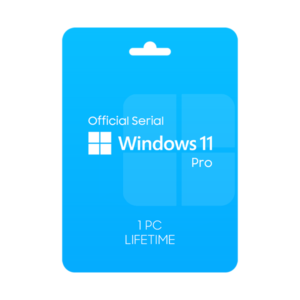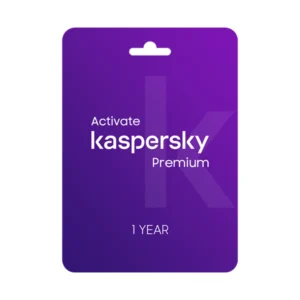
It is important to note the distinction of the technologies involved in the production of the displays particularly in regard to monitors. Many will have come across types of monitors, particularly those that are IPS (In-Plane Switching), OLED (Organic Light-Emitting Diode), VA (Vertical Alignment) or TN (Twisted Nematic). There are various types of panels available for sale in the market, each with its own benefits, especially in terms of the activities that they are likely to be used for be it gaming, media, design work, and productivity in covers of people’s well being. The objective of the article is to highlight the comparative features of these panel technologies to inform readers decisions on the relevant one to select for use in a given situation.
Table of Contents
Best selling products
-
Windows 11 Pro Lifetime Activation Key for 1PC, linked to your Microsoft Account
Original price was: 300.00 EGP.140.00 EGPCurrent price is: 140.00 EGP. -
Office Pro Plus Lifetime Activation Key for 1PC, 2021, 2019 or 2016
Price range: 140.00 EGP through 199.00 EGP -
Kaspersky Premium Account Activation for 1 year (Includes VPN Unlimited And Password Manager)
Price range: 270.00 EGP through 9,800.00 EGP -
PlayStation Network (PSN) Gift Card – $5 to $100 (UAE & KSA)
Price range: 320.00 EGP through 7,084.00 EGP
TN (Twisted Nematic) Panels – Summary View

Speed: Best for Competitive Gaming
While many panel types were previously categorized into three and none had as extreme approach on pronouncing motion amendments, certainly, it would be TN panels shouting out ‘game on.’ On the other hand, the current eSport and MLG gaming phenomenon has placed an unavoidable overhead on refreshing rates and display latency which while clearly supported by Benq Z monitors high refresh rates remained a mere wish Thus adaptive technology usage TN panels still strangle provided acceptable results for e-sports HDD vendors simply watching.
Color Accuracy and Viewing Angles: Trade-offs in Visual Quality
Nevertheless, as advantage speed, the TN panels design brings benefits limitations on color and resolution. In addition, lateral color shifting with the slight vertical tilt of the head avoids sharp lines, especially rules, in which the colors will be washed out only at one head on view, making TN ill suited for any work regarding the accurate perception of colors. Ideally, however, the scant angles overcome how users watch videos or do visual arts or design work.
Best Use Case: Active Gaming
- Pros: Lightning fast response rates and low input lag.
- Cons: Very low color reproduction and viewing angles.
Here is more information about TN monitors.
VA (vertical Alignment) Panels

It Deepens Contrast: Very Good For Watching Films.
VA panels have been praised because of their very high contrast ratios as well as the realization of truly black levels compared to panels of IPS or TN type. They are thus very perfect for watching movies or any film media that contain black frames because black will become even blacker. VA panels are generally found to be offering image quality and price between TN and OLED panels.
Slower Response Times: Motion Blur Concerns
Nonetheless the image quality of VA panels is the highest in these types of panels the response time is comparatively low in VA than it in TN and IPS and hence one experiences a bit of motion blur particularly with fast moving games. This short coming could be a problem g for serious gamers who want top performance but for casual gaming VA panels are more than enough.
Cost: Good Price for Mid-Range Across Most Brands
VA panels occur below the price range of OLED displays yet give better contrast than the ips panels thus they remain a good option for users in between low image quality and high costs.
Best Use Case: Media Consumption and Casual Gaming
Pros: Best in class contrast, best blacks and low price.
Cons: Extended response times may give rise to blurring in motion.
You can Buy the Best VA monitor from here Samsung 27″ G5 Odyssey 144Hz Gaming Monitor – LC27G55TQBMXUE
IPS (In-Plane Switching) Panels

Color Accuracy and Viewing Angles characteristics in the presented image: Best fit for professional jobs
IPS panels are known for their color fidelity and large angles visually. These features make IPS Panels the mainstream panels for reasons, graphic designers, photo editors, video editors, and all other creative people. In contrast to TN panels, IPS displays are able to reproduce correct colors at almost any angle, as opposed to more vibrant but out of color picture in better than TN panels with narrow viewing angles.
Moderate Response Times: Good Option for Gaming as well as Professional Work.
While offering superior viewing experience, IPS panels can never beat the TN panels in competitive fast paced gaming. They are however faster than VA panels thereby making them a general use for gaming and productivity. With the new age IPS panels having power of over 144Hz, more ‘gaming’ has come with it but still there is the need for color balance though all will not be fast response leviathans.
Brightness: Not as good in bright environments, more suited in dark environments.
Compared to OLED panels, IPS panels have been found to have more advantages in bright environments mostly because of glaring light output. This is where such conditions are best taken up for office work or for general activities in rooms filled with daylight.
Best Use Case: Work and Creative work for greatest part of the time.
Pros: Great color reproduction and large relative position.
Cons: Faster than VA but slower than TN.
You can Buy the Best IPS monitor from here LG 24-inch FHD IPS Gaming Monitor with AMD FreeSync™ – 24MP400-B
OLED (Organic Light-Emitting Diode) Panels

Best Image Quality: Unmatched Visual Experience
It is very true, that compared to all the types of panels in the market, the image quality of an LCD with OLED display is the greatest one. This is due to the capability of achieving an infinite contrast ratio, true black and high saturation color. Each pixel of the OLED display contains a light source that can be turned off leading to true black color. This is why for HDR content, gaming or watching movies where image quality is of utmost importance, OLED panels are best suited.
Fastest Pixel Response Time: Ideal for Gaming
Dangerous OLED displays, like from cathode ray tube monitors or screens, there is little motion blur or trailing, as the pixel response time is usually around 0.03 ms. Perspective gamers who value the picture and the speed of the image will definitely be appreciative of the speed and picture clarity of Oled or AMOLED panels.
Drawbacks: Price, Burn-In, and Bright Room Performance
There are, however, a few downsides to the wonder that is an OLED display. The first is that they are quite expensive as compared to TN, IPS and VA displays. The next downside is that, with regards to monitors, there is image burn in carried out by OLED, leaving an indelible imprint on the centre of the monitor screen. This makes working on or using the monitor for application with static components ever so often unfeasible. On the other end of the spectrum, though, OLED displays tend to enjoy low luminance in bright fireplaces, hence losing conspicuity in daylight lit rooms.
Best Use Case: High-end gaming, watching movies as well as HDR content.
- Pros: Very deep blacks and rich colors, near zero response time, and difference in contrast ratio is infinite.
- Cons: Expensive, burn-in concerns and lacks brightness in terms of impact in bright environments.
Key Considerations for Different Use Cases
Gaming
When it comes to competitive gaming TN panels are still the best since the hides the color change issues and have very little lags. For those gamers who value more of the image quality and indulge in various genres of games especially those of high action and effects, IPS is a good compromise in speed and picture. For the ultimate wannabe gamers, OLED is the optimal solution if the price is not an issue but risk factors associated with burn-in settles in after a time as always.
Media Consumption
When it comes to watching movies or media, the best entry point value is VA panels because it provides very good black levels and contrast without burning a hole in one’s pocket like OLED would. However, if the financial upper limit is high, the OLED screen offers the highest quality of images ever, particularly in the HDR mode.
Productivity and Design Work
In the event that you require a display for processes that require color, like designing and editing videos, IPS is a panel type that will suit you best owing to the good coloration. As far as productivity is concerned, even though OLED displays have the advantage of good color representation, their high cost and risk of burn in makes them impractical for a long run.
Performance in Sunlight
For bright surround light condition, IPS panels are better than both OLED and VA panels due to their screens being generally brighter and less inversely reflective. This makes them appropriate for the office and brightly-lit areas.
Conclusion: Finding the Best Monitor for Your Needs
Choosing between TN, VA, IPS and OLED panels will always depend on one’s primary usage:
- TN screens are the answer to the prayers of any avid eSports player who puts great value on speed.
- VA screens come with better contrast and darker colors ideal for viewing movies and playing less competitive games.
- IPS screens are most suited for those who need a bit of everything videogames and productivity – good color reproduction, decent viewing angles and the ability to delve into gaming.
- OLED screens are the best and last option in high a high end visual experience particularly on gaming and media though they are more expensive and come with some drawbacks such as burn in and low brightness levels in brightly lit rooms.
Considering each unit’s advantages and deficits gives one the chance of choosing the best monitor that they need and therefore enjoying the best out of the computer use which can be for gaming, working or watching movies.






Reading this felt like having a conversation with someone who knows exactly how to make you see things in a new light.
Who knew choosing a monitor could be like picking a superhero? TNs the Flash, VAs Batman, IPS is Spider-Man, and OLED? The Superman of screens! This articles my Justice League guide to gaming and design. Thanks for saving me from monitor mayhem!